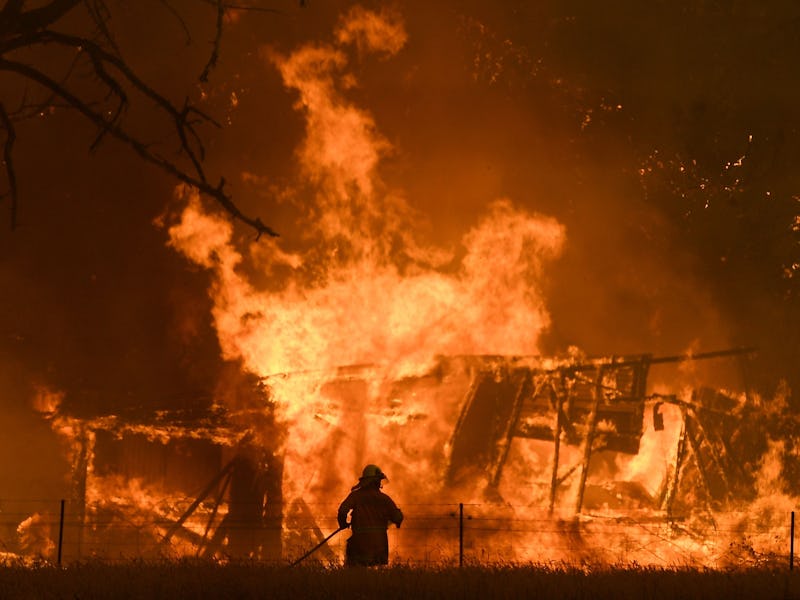Australian wildfires have cloaked the country in a demonic red glow
As the new decade begins underneath a blood-red sky, the need for solutions is even more pressing.

In the last month of 2019, devastating fires have leveled Australia, leaving a scene of record-setting destruction under a thick blanket of smoke. Up in the sky, red light presides over the destruction.
Images from Australia that surfaced on Reddit and Twitter on Tuesday show a demonic reddish glow that has descended upon the country during certain sunlit hours. This December, Australia has been battling bushfires that have led some states to declare a state of emergency. In New South Wales, the state with the most fires, more than 900 homes have been destroyed and 12 people have died.
“Hell has descended on Victoria as the world literally turns red” writes one Twitter user. “This isn’t some dystopian novel,” writes another. “This is real life.”
When it comes to figuring out what caused the fires themselves, the answer is simple: These Australian fires are part of a global trend that predicts an increase in extreme weather. In places prone to wildfires, that means longer, stronger, and more devastating fire seasons. This past summer, an estimated 253,321 acres burned in California. Indonesia had its skies painted red as the country was engulfed in flame back in September 2019.
The explanation for the red skies caused by these fires is equally simple: as wildfires rage in the Australian brush, the smoky haze it leaves behind changes the way sunlight is scattered in the sky.
Why do wildfires turn the sky red?
The red sky effect all comes down to the number of microparticles present in the atmosphere.
When the sun shines down on earth, it’s basking us radiation. If that radiation is visible to us, that’s because it has a wavelength that’s within the visible spectrum. Colors with the longest wavelengths range from red to orange, whereas those with the shortest are blue and purple.
The spectrum of visible light
During the day, the sun’s powerful bands of light pass through the earth’s atmosphere, where that light encounters obstacles, like water vapor, aerosols, dust or molecules like nitrogen and oxygen. During a clear day, light at the blue wavelength tends to bounce off nitrogen and oxygen particles more readily — which casts the sky in blue light. That effect is called Rayleigh scattering.
In the case of wildfires the sun’s light is moving through a dense smoky haze. Those slightly larger smoky particles are far more likely to allow the red light to scatter versus the blue light. That same effect was on display in Indonesia in September as Koh Tieh Yong at the Singapore University of Social Sciences explained to the BBC at the time.
“There are also smaller particles, around 0.05 micrometers or less, that don’t make up a lot of the haze but are still somewhat more abundant during a haze period, he said.
“This is enough to give an extra tendency to scatter red light more in the forward and backward directions than blue light - and that is why would you see more red than blue.”
Red sky, though easily explained, is far harder to tackle. Australia has come under scruitiny for its climate policy as the blazes continue.
This fire season was preceded by Australia’s driest spring on record, and the country’s hottest day on record in December where the average high temperature was 107.4 degrees Fahrenheit. The previous record had been set 24 hours earlier.
Combined with predictions that the global climate crisis will lead to increases in “megafires” or other disastrous wildfires, Australia’s government has already been forced to grapple with the results of climate change in this decade.
As the new decade begins underneath a blood-red sky, the need for answers is even more pressing.